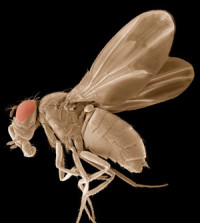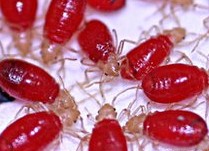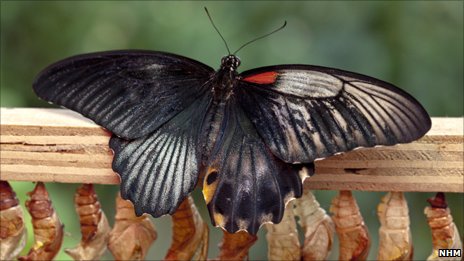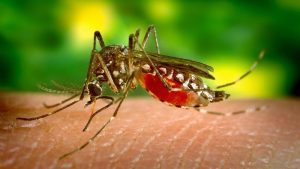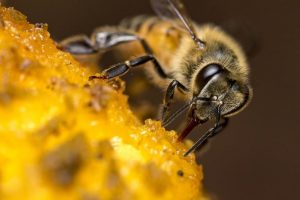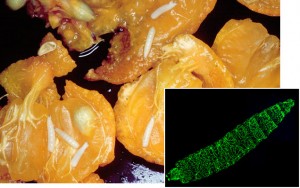US and Canadian researchers have evolved a population of fruitflies that can count. The result, presented on 9 July at the First Joint Congress on Evolutionary Biology in Ottawa, Canada, supports the notion that the neural mechanisms underlying basic arithmetic skills first emerged hundreds of millions of years ago. It could also eventually offer a key to understanding why some people have problems with numbers.
Few doubt that our closest animal relatives have some capacity to count. A variety of clever studies have also revealed the numerical skills of more distant species, including salamanders, fish and bees. But until now, no one has ever tried to genetically enhance an animal’s counting ability.
To tackle the challenge, evolutionary geneticists Tristan Long, of Wilfrid Laurier University in Waterloo, Canada, and William Rice, of the University of California, Santa Barbara, teamed up to try to create a race of numerically savvy insects. During a 20-minute training period, flies were exposed to either two, three or four flashes of light — two and four flashes coincided with a vigorous shake administered by placing a electric toothbrush next to the box containing the flies. After a brief rest, the flies were returned to box and shown the light flashes. Despite a dislike for being shaken, most of the flies were not able to learn to associate the negative stimulus with the number of flashes. But 40 generations later, they could.
The researchers caution that the work is preliminary and that they do yet know what genetic changes are behind the insects’ evolved number sense.
“The obvious next step is to see how [the flies’] neuro-architecture has changed,” explains Long. He then hopes to look for genetic differences between control and experimentally selected flies to pin down the genes responsible for their enhanced counting ability.
Neuroscientists have long speculated that human mathematical ability is built on an innate foundation that predates language and complex reasoning. Dyscalculia, a poorly understood disorder that affects a person’s ability to learn and perform basic arithmetic operations, may in some cases be related to an impairment of this innate foundation. If so, says Long, fruitflies could help to uncover genetic links to the disorder.
“This project was really about getting people interested in using fruitflies as a model system for understanding numerical competence and its evolution,” he adds.
:: Read original here ::
